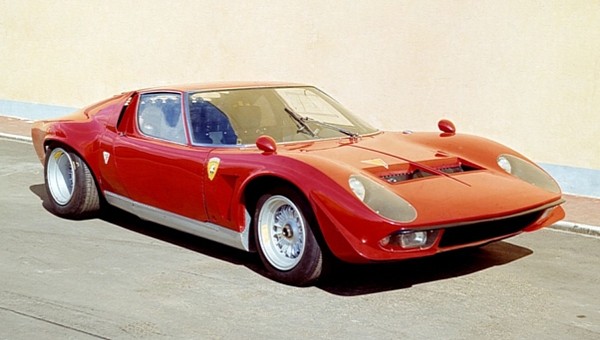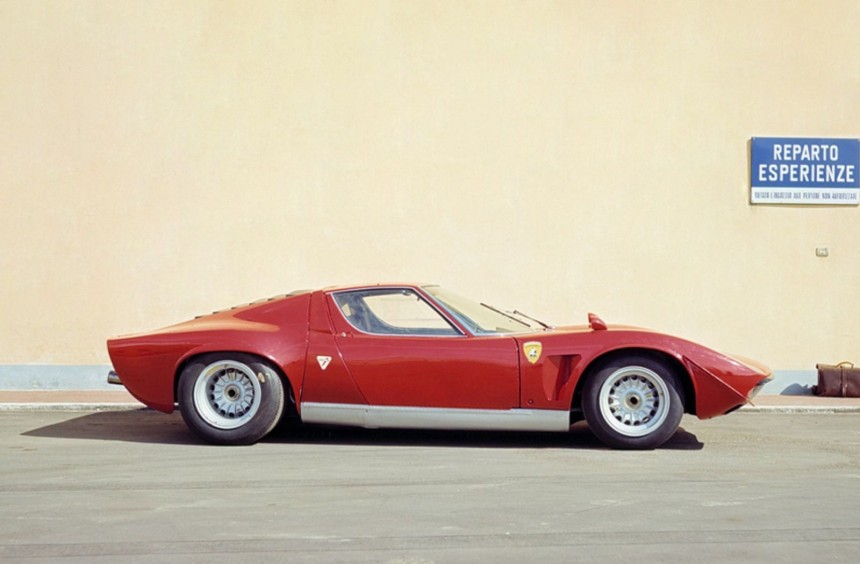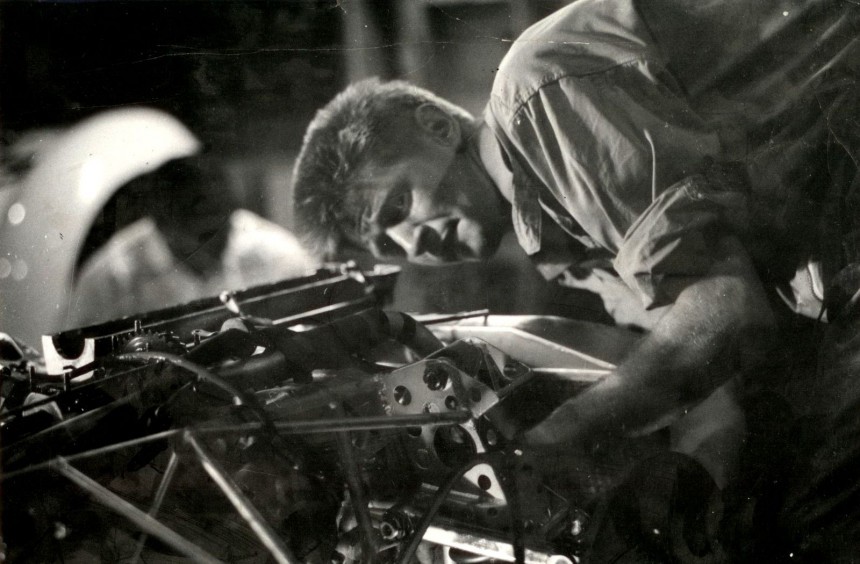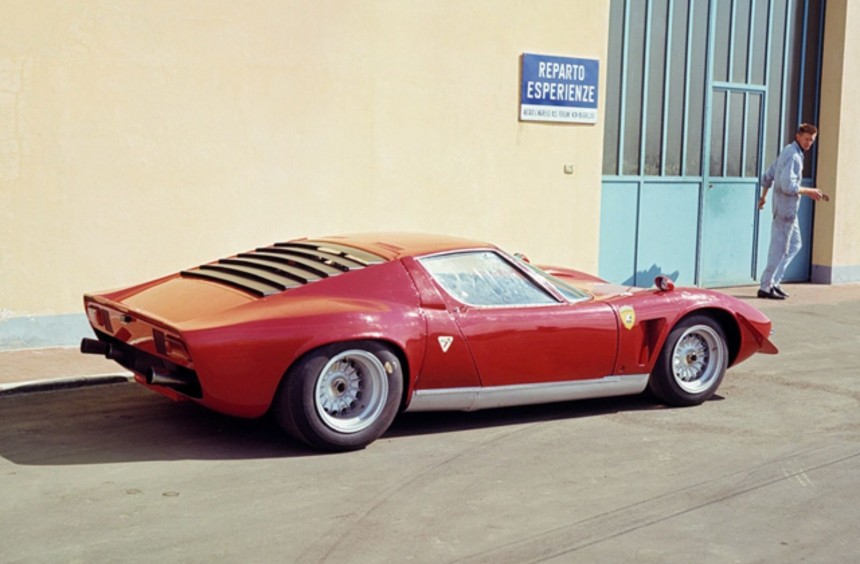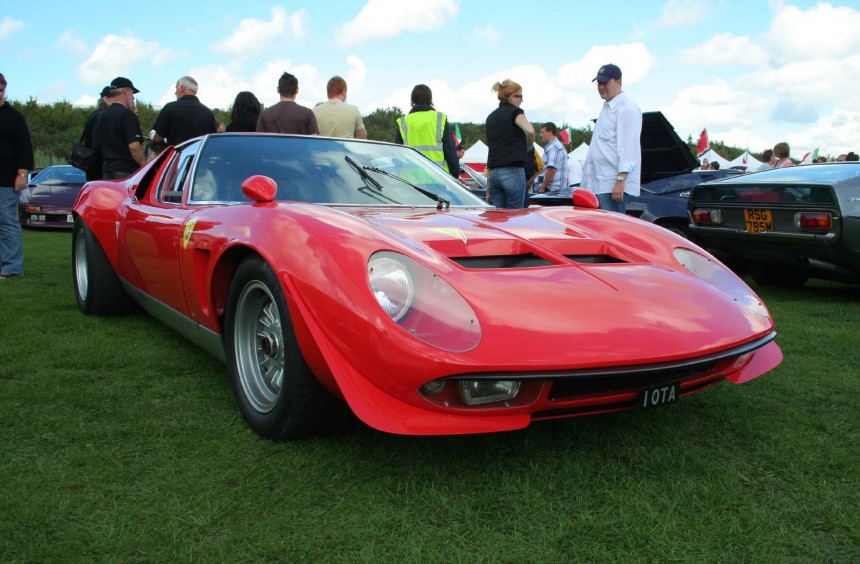The P400SV was the last and most powerful iteration of Lamborghini’s iconic Miura. However, a year before this model was introduced, the company’s chief test driver customized a standard P400, giving birth to an outrageous one-off that became the most powerful Miura ever created.
Ferruccio Lamborghini made a fortune from selling tractors. This enabled him to afford the finer things in life, including the world’s most exotic cars. In 1958, he purchased a Ferrari 250 GT, but he was dissatisfied with how it drove and felt. Instead of selling it and buying something better, the magnate decided to build his own grand tourers, so he founded Automobili Lamborghini S.p.A. in 1964.
The company’s first model was the 350 GT and two years later, it added the revolutionary Miura to its lineup. Dubbed the world’s first mid-engine, road-legal supercar by many enthusiasts, it remains one of Lamborghini’s most iconic models.
Although not many examples were built (764, to be exact), the Miura was continually improved during its seven-year production run. That said, Ferruccio Lamborghini never wanted to get involved in motorsport, so every iteration was fine-tuned for the road.
During the early months of 1970, a group of Lamborghini employees headed by engineer and chief test driver Bob Wallace were determined to create a racing version of the Miura. Ignoring Ferruccio’s reluctance to involve his company in motorsport, Wallace and his colleagues took matters into their own hands and developed the car in their spare time.
The idea was to target the FIA Group 4 competitions and the 24 Hours of Le Mans which required carmakers to build a minimum of 500 road-going examples during twelve consecutive months to gain homologation.
This figure was never attained, and the boss never gave his blessing, yet the extensively-modified car dubbed P400 Jotta was finished and remained the most powerful Miura ever built, even after the introduction of the SV in 1971.
The Jota started as a P400 production version. However, Wallace and his team disassembled and improved it in every way conceivable. For starters, they drilled several additional holes in the semi-monocoque structure to shed weight. In addition, the bulk of the chassis’ steel components were re-machined out of a lightweight aluminum–copper alloy called duralumin.
They also modified the monocoque to accommodate a 60-liter (132 lbs.) fuel tank on each side. This enabled the Jota to carry 30 extra liters (66 lbs.) of fuel compared to the standard P400 which featured a single 90-liter (198 lbs.) tank.
The independent, double-wishbone suspension architecture of the production car was retained, but adjustable, race-spec Koni dampers and anti-roll bars were added to improve stability at high speeds.
The stock Bizzarini-designed, 3.9-liter V12 was also considered good enough for racing, so it wasn’t enlarged. But Wallace increased the compression ratio, added new camshafts with more aggressive profiles, a dry-sump lubrication system, and swapped the stock three-barrel carbs with larger units.
These modifications were enough to boost output from 345 hp (350 ps) all the way up to 440 hp (446 ps), which made the Jota king among all Miura versions in terms of power. In contrast, the most potent production version, the 1971-1973 SV, was rated at 380 hp (385 ps).
Like the chassis, the Jota’s body featured a multitude of redesigned panels that were fabricated out of lightweight duralumin. These include the rear engine cover, the front lid, and both doors.
To improve aerodynamics, the engine cover had a slightly larger spoiler and flatter wheel arches while the front lid featured a large chin spoiler and wider vents behind each wheel arch. Moreover, the pop-up headlights of the P400 were replaced by fixed units. Their covers and the windows (except the windshield) were made from Plexiglas to shave off even more weight.
Sitting on 15-inch magnesium Campagnolo wheels wrapped in Dunlop slicks, the race-spec Jota weighed only 1940 lbs. (880 kg) which made it 908 lbs. (412 kg) lighter than the stock P400.
Finished in the fall of 1970, it was painted red and featured two Lamborghini logos with yellow backgrounds on each side, presumably to spite rivals, Ferrari.
Although it never competed in an FIA Group 4 competition, the Miura Jota was extensively tested by Bob Wallace for the next six months, racking up about 12,427 miles (20,000 km) on the odometer.
In the meantime, Scuderia Brescia Corse owner and avid collector, Dr. Alfredo Belponer, got wind of the Jota’s existence and struck a deal to buy it through InterAuto, a local Lamborghini dealership.
The car was delivered to InterAuto in April 1971, but before Dr. Belponer got his hands on it, one of the dealership’s mechanics took it out for a spin on the brand-new Brescia ring road. Unfortunately, he ended up crashing the one-off which caught fire. The mechanic managed to escape but the car burned to the ground.
Although its engine was salvaged, the original P400 Jota was never rebuilt. Several recreations have sprung up in the decades that followed thanks to passionate enthusiasts but none of them are as significant as the real thing.
The Miura Jota is a Lamborghini legend that deserves to be remembered and celebrated. It inspired the ultra-rare, limited-edition P400 SV/J and will forever hold the title of the fastest, most powerful Miura ever built by the Italian manufacturer.
Giancarlo Barbieri, one of the engineers involved in its development, talks about this four-wheeled icon in the YouTube video below by Davide Cironi Drive Experience which we highly recommend.
The company’s first model was the 350 GT and two years later, it added the revolutionary Miura to its lineup. Dubbed the world’s first mid-engine, road-legal supercar by many enthusiasts, it remains one of Lamborghini’s most iconic models.
Although not many examples were built (764, to be exact), the Miura was continually improved during its seven-year production run. That said, Ferruccio Lamborghini never wanted to get involved in motorsport, so every iteration was fine-tuned for the road.
The sole exception
The idea was to target the FIA Group 4 competitions and the 24 Hours of Le Mans which required carmakers to build a minimum of 500 road-going examples during twelve consecutive months to gain homologation.
This figure was never attained, and the boss never gave his blessing, yet the extensively-modified car dubbed P400 Jotta was finished and remained the most powerful Miura ever built, even after the introduction of the SV in 1971.
Chassis and powertrain upgrades
They also modified the monocoque to accommodate a 60-liter (132 lbs.) fuel tank on each side. This enabled the Jota to carry 30 extra liters (66 lbs.) of fuel compared to the standard P400 which featured a single 90-liter (198 lbs.) tank.
The independent, double-wishbone suspension architecture of the production car was retained, but adjustable, race-spec Koni dampers and anti-roll bars were added to improve stability at high speeds.
The stock Bizzarini-designed, 3.9-liter V12 was also considered good enough for racing, so it wasn’t enlarged. But Wallace increased the compression ratio, added new camshafts with more aggressive profiles, a dry-sump lubrication system, and swapped the stock three-barrel carbs with larger units.
These modifications were enough to boost output from 345 hp (350 ps) all the way up to 440 hp (446 ps), which made the Jota king among all Miura versions in terms of power. In contrast, the most potent production version, the 1971-1973 SV, was rated at 380 hp (385 ps).
Exterior modifications
To improve aerodynamics, the engine cover had a slightly larger spoiler and flatter wheel arches while the front lid featured a large chin spoiler and wider vents behind each wheel arch. Moreover, the pop-up headlights of the P400 were replaced by fixed units. Their covers and the windows (except the windshield) were made from Plexiglas to shave off even more weight.
Sitting on 15-inch magnesium Campagnolo wheels wrapped in Dunlop slicks, the race-spec Jota weighed only 1940 lbs. (880 kg) which made it 908 lbs. (412 kg) lighter than the stock P400.
Finished in the fall of 1970, it was painted red and featured two Lamborghini logos with yellow backgrounds on each side, presumably to spite rivals, Ferrari.
A tragic fate
In the meantime, Scuderia Brescia Corse owner and avid collector, Dr. Alfredo Belponer, got wind of the Jota’s existence and struck a deal to buy it through InterAuto, a local Lamborghini dealership.
The car was delivered to InterAuto in April 1971, but before Dr. Belponer got his hands on it, one of the dealership’s mechanics took it out for a spin on the brand-new Brescia ring road. Unfortunately, he ended up crashing the one-off which caught fire. The mechanic managed to escape but the car burned to the ground.
Although its engine was salvaged, the original P400 Jota was never rebuilt. Several recreations have sprung up in the decades that followed thanks to passionate enthusiasts but none of them are as significant as the real thing.
The Miura Jota is a Lamborghini legend that deserves to be remembered and celebrated. It inspired the ultra-rare, limited-edition P400 SV/J and will forever hold the title of the fastest, most powerful Miura ever built by the Italian manufacturer.
Giancarlo Barbieri, one of the engineers involved in its development, talks about this four-wheeled icon in the YouTube video below by Davide Cironi Drive Experience which we highly recommend.
